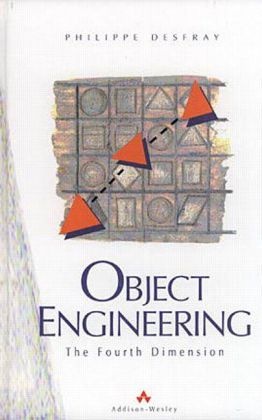Read more
This book describes the class-relationship method for object-oriented analysis and design in the context of C++. However, the book can be readily understood by people without knowledge of C++. The book gives a step-by-step definition of an object-oriented model, introduces new modeling concepts and explains their relevance. It combines theory with examples of the use of modeling rules or transformation mechanisms, such as automation specification rules by inheritance of the class identification principle. The book covers all aspects of software development, from specification through to implementation, and gives details of important standard modeling processes.
List of contents
- Essence of a Model
- Class Relation Model Background
- Contents
Object Model - Conceptual Approach
- Object-Oriented Programming
Basic Notions Of The Class Relation Model - Class Relation Model Overview
- Key Class Relation Premises
Basic Notions Of The Structure Model - Class and Inheritance Concepts
- Class Members
- Correspondence between Attributes, Methods, relations and Classes
- Inter-Class Dependency
- Application Invariants
- Visibility
- Decomposition by Inheritance
- Objects
Operating Model - Introduction
- Pre-and Post-conditions
- Specifying the Object Lifecycle: Control Automation
- Exception Programming: Pre- and Post-condition Extension
Dynamic Model - Overview
- representing the Processing Sequence (Object Flow)
- Processing Scenarios
- Trigger Automata
- Events
Structuring - Concepts
- Software Structuring
- Schemas
- Structuring Domains
- System Modeling
- Modeling Rules
- Handling Instances
- Normal Form Laws
- Correct and Valid Modeling
- Design Rules
- General Modeling Approach
Methodology: Software Development Phases - Software Lifecycle Basics
- Lifecycle Definition
- User-oriented Approach: Iterative Analysis and Design Techniques
Analysis - Purpose
- Preliminary Analysis
- Detailed Analysis
- Example: Elevator System
Design - Preliminary Design
- Case Study: Databases
- Case Study: Multi-tasking Applications
- Using Genericity
- Preparing Integration
- Class Relation Design Approach (Review)
- Example: Designing the Elevator Application
>Carrying Through A Model: Hypergenericity - Introduction
- Implementation Directives
- The H Language
- Temporary or Persistent Hyper-genericity
- Examples Using Hypergenericity Rules
- Hypergenericity Methodology
- Impact of Hypergenericity on the Lifecycle
- Development
- Detailed Design
- Coding
- Unit Tests
Comparing Models (OMT) - wOverview
- Need to Upgrade Existing Models
- Class relation/OMT Comparison
- Conclusion
Summary
This book describes the class-relationship method for object-oriented analysis and design in the context of C++. However, the book can be readily understood by people without knowledge of C++. The book gives a step-by-step definition of an object-oriented model, introduces new modeling concepts and explains their relevance. It combines theory with examples of the use of modeling rules or transformation mechanisms, such as automation specification rules by inheritance of the class identification principle. The book covers all aspects of software development, from specification through to implementation, and gives details of important standard modeling processes.

